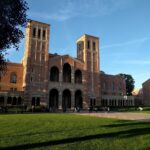Academic Bureaucracy in Motion
If colleges and universities look hopelessly bureaucratic from the outside, the view from inside is even worse. “In 2005, colleges and universities employed more than 675,000 full-time faculty members,” Benjamin Ginsberg, a political science professor at Johns Hopkins University writes in his book, The Fall of the Faculty: The Rise of the All-Administrative University and Why It Matters. “This number may seem large but, in the same year, America’s colleges and universities employed more than 190,000 individuals classified as ‘executive, administrative and managerial employees.’”
“Another 566,405 college and university employees were classified as ‘other professional.’” Yet these folks too look more than vaguely administrative.
“This category includes information technology specialists, counselors, auditors, accountants, admission officers, development officers, alumni relations officials, human resources staffers, editors and writers for school publications, attorneys, and a slew of others.” Thus you can safely say that the faculty make up less than half of the employees working for colleges and universities.
“Forty years ago, America’s colleges actually employed more professors than administrators,” Ginsberg notes. “The efforts of 446,830 professors were supported by 268,952 administrators and staffers.”
“Over the past four decades, though, as the number of full-time professors increased slightly more than 50 percent—a percentage comparable to the growth in student enrollments during the same time period—the number of administrators and administrative staffers employed by those schools increased by an astonishing 85 percent and 240 percent, respectively.”
Ironically, the shift to administrative overload is even more pronounced in nominally private colleges than in definitively public ones. “Between 1975 and 2000, the number of administrators and managers employed by public institutions increased by 66 percent,” Ginsberg points out. “During the same time period, though, the number of administrators employed by private colleges and universities grew by 135 percent.”
At their most benign, these administrators may be responsible for all of the stratospheric increase in the cost of higher education. At their most malignant, they are a threat to the first amendment.
Factoring out inflation, from 1947 to 1995, “overall university spending increased 148 percent,” Ginsberg notes. “Administrative spending, though, increased by a whopping 235 percent.”
“Instructional spending, by contrast, increased only 128 percent, 20 points less than the overall rate of spending increase.” Meanwhile, some of the worst forms of campus political abuse were the creation not of the professoriate, but of administrators, including speech codes and diversity training as well as civility workshops.
“In recent years, unfortunately, on many campuses the political commitments of the faculty have been hijacked and perverted by administrators,” Ginsberg alleges. “Issues that to many professors represent moral imperatives have been transformed into powerful instruments of administrative aggrandizement.”
“Ironically, administrators have brought about this transformation by forging what amount to tactical alliances with representatives of minority groups as well as activist groups on their campuses.”
Thus, “At Hopkins, for example, the four undergraduate students majoring in Africana studies in 2007-08 were served by a program director, an eleven-person executive board, ten affiliated faculty, two visiting faculty, an associate research scholar, and a program director.”
Malcolm A. Kline is the Executive Director of Accuracy in Academia.
If you would like to comment on this article, e-mail contact@academia.org




